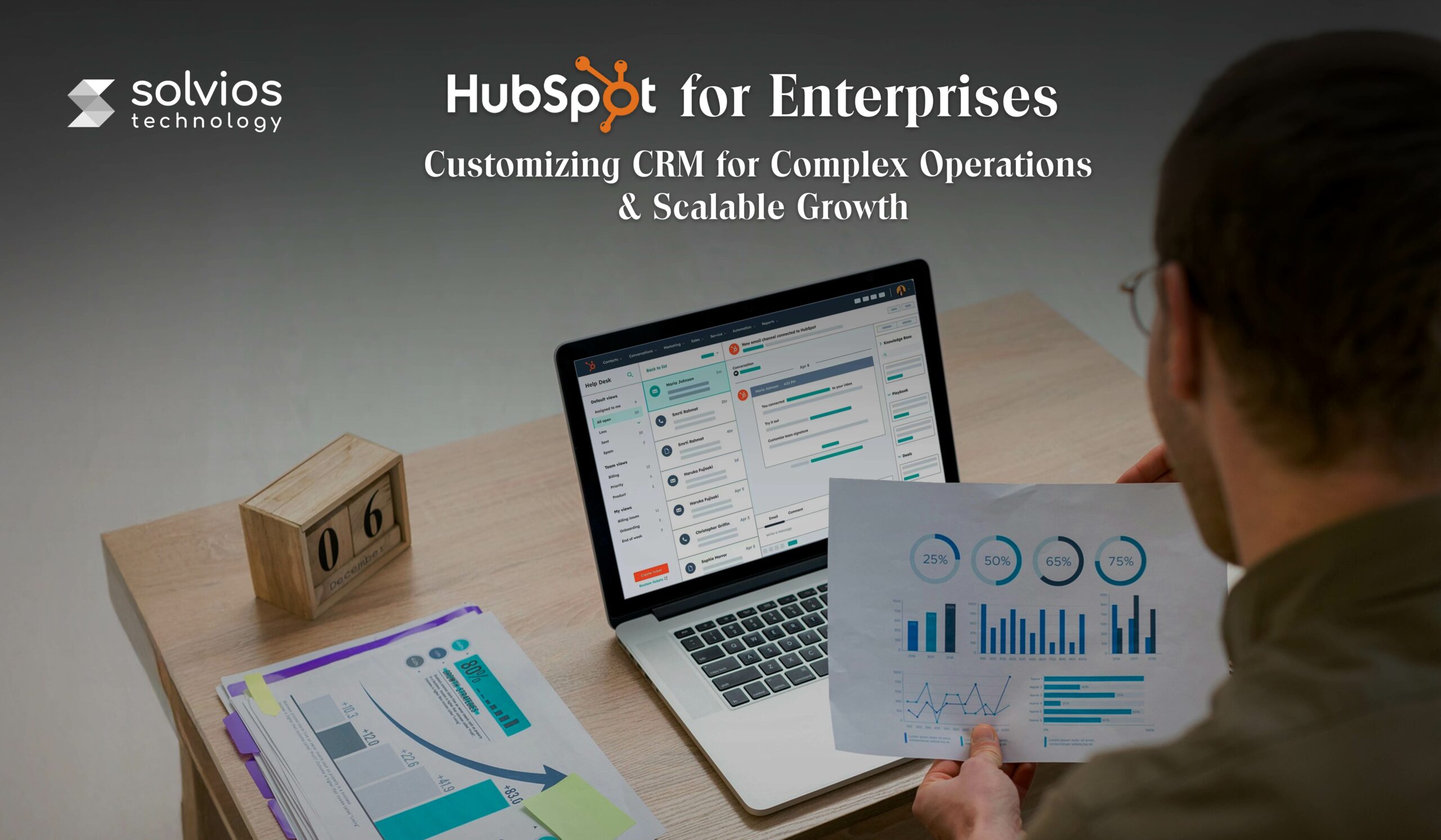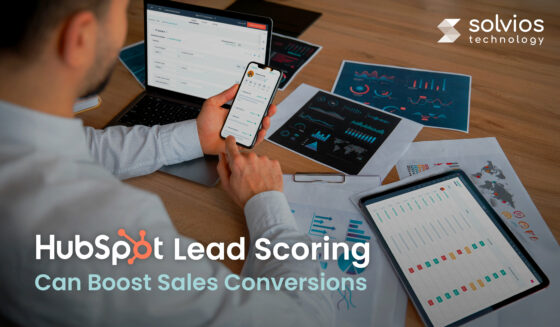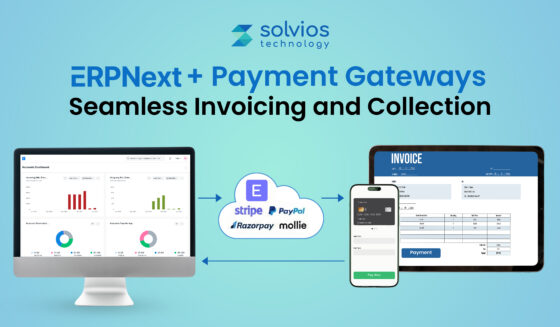
Introduction
As businesses scale, they become more complex, demanding, and challenging to streamline.
Enterprises often face challenges with their workflows and systems. Unlike scaling companies, large enterprises have several departments operating in silos, each connected by distinct tools to streamline communication.
Enter HubSpot for Enterprise — a CRM designed to streamline complex operations across your workflow.
It helps enterprises streamline:
- Data Fragmentation: Every operation is recorded over a single source of data. This keeps the data structured in a centralized database.
- Centralized Operations: Access to connected tech to streamline communications between the team and operations.
- Unique Tech Stacks: Use of different tech stacks to streamline everyday workflow.
HubSpot’s scalable CRM for enterprises enables businesses to access the tools needed to unify fragmented systems, thereby bringing teams together into a centralized platform.
Continue reading as we learn more about the role of HubSpot CRM for enterprises in the following sections.
Why Choose HubSpot for Enterprise?
Unified Data Management Across Departments
HubSpot allows marketing teams to have a single source of data. It enables them to say goodbye to spreadsheets, making their operations standardized while keeping the data clean and the same throughout.
Role of HubSpot in data management:
- Single timeline for emails, calls, deals, tickets, and invoices
- Partitioning and role-based access so regions/brands stay organized
- Sandboxes to test changes without polluting production
Scalability Through Enterprise Tools
As your workflow scales, it gets more complex. Enterprise-grade HubSpot CRM allows you to scale and automate parts of your operations for better consistency.
Role of HubSpot in scalability:
- Easy to mark custom objects and leverage data labelling to model real-world operations.
- Programmable automation/webhooks for cross-system workflows.
- Data sync and field transforms to standardize upstream feeds.
Advanced Reporting for Workflows
Enterprise reporting turns activity into decisions. Workflows handle SLAs, routing, and enrichment, freeing reps to sell and agents to resolve customer queries. HubSpot further helps enterprises to access datasets for governed metrics by the team.
Deep Customization in HubSpot for Enterprise: Operations Hub & Tools
With HubSpot for enterprise, business owners get access to deep customization of their operations. Let’s understand more about it by looking into the different aspects of deep customization in this section.
Operations Hub Customization
Operations Hub pulls finance, product, and support data into one governed schema, then keeps it clean automatically. Once you opt for HubSpot Operations Hub customization, you can manage the following:
- Two-way Data Sync with guardrails: Whitelist fields per app, set “authoritative source” by field (ERP for ARR; app for usage).
- Association labels: Create different labels to assess unique phases of your operations and route them effectively.
- Programmable workflows: Leverage HubSpot’s AI to program repeatable workflows.
Enterprise Tools Breakdown
Access to tools for HubSpot enterprise customization helps you fuel your existing workflows and change the way your workflow executes.
Modeling & Data
- Custom objects & calculated properties: They represent subscriptions, assets, and locations, and compute metrics like MRR, risk, or propensity once for reuse.
- Flexible associations & required fields by stage: Ensure data completeness where it matters (e.g., “PO Number” before Closed-Won).
Automation & Extensibility
- Programmable automation: Leverage automations to eliminate repeating operations.
- Behavioral Customization: Access behavioral events and customize them to improve outreach and sales.
Governance & Scale
- Business Units: Separate the different branches of your operations while retaining their data in a single source.
- Audit Trails: Stay prepared with document changes and rollbacks with clear insight into everything.
Ready to take your operations to the next level?
Contact usEnterprise Scaling Strategies with HubSpot for Enterprise
Implementation Roadmap
Start with a two-week audit of data, integrations, users, and processes, then set three board-level KPIs (cycle time, win rate, renewal rate). Build a phased roadmap that could look something like this:
Phase 1: List out core objects, data hygiene, routing, and executive datasets.
Phase 2: Focus on automating your workflow for efficiency.
Phase 3: Set CPQ/quotes, advanced attribution, and sandboxed experiments.
Cross-Departmental Alignment
Create a cross-functional steering group with sales, marketing, service, operations, and finance. Agree on shared definitions (lead, MQL, SQL), SLAs for handoffs, and territory rules.
You could also focus on the following factors to determine cross-departmental alignment:
- Biweekly backlog review with RACI owners.
- Assignment rules are agreed upon once and reused everywhere.
- Shared dashboards so “the number” matches across teams.
Ongoing Training & Adoption
Finally, it’s time to leverage HubSpot’s academy to set role-based learning paths. You can streamline training and adoption by adding internal playbooks, creating short Looms, and running weekly office hours. Build a network to coach new hires and collect feedback.
Real-World Use Cases of HubSpot for Enterprise CRM Customization
Complex Workflow Management
With HubSpot, businesses can separate regional operations and model reality with custom objects (e.g., Brand, Partner, Subscription). It can also help scale global operations using programmable workflow management.
Example:
A manufacturer from the EU uses HubSpot to execute brand-specific operations across different regions and languages using the workflow management setup.
Operations Hub for Enterprises
Users can now add an authority score to individual fields while preparing for the automation. It helps them set programmable workflows that keep systems in sync.
Example:
A SaaS firm improved its accounting and subscriptions by utilizing triggers that automated client onboarding and invoicing.
AI-Powered Automation & Insights
HubSpot offers AI-powered automations that personalize operations based on user behavior and lifecycle (open, click, product usage). It also enables your team to incorporate predictive scores and optimization operations, leading to improved sales.
Example:
An F&B company improved its sales using scoring factors and a lookalike acquisition campaign, achieving significant growth in a single quarter.
HubSpot for Enterprise Implementation Roadmap (Step-by-Step)
Step I: Audit & Define Vision
Conduct a thorough analysis of your workflow. Simplify your workflow by listing out what’s causing hurdles in your operations (duplicates, missing fields, or delays in data). Create a list of the following delays and test your operations in the sandbox.
Step II: Phase-Wise Rollout
Choose one region or product line and start with a lean rollout. Divide the rollout into three phases: core objects, clean routing, and one executive dashboard. Start your operations in the sandbox, and then move to the next team using the same template.
Step III: Operations Hub Deployment
Publish a data dictionary and declare the source of truth per field (ERP owns ARR; product owns usage; marketing owns consent). Turn on two-way sync with allowlists, normalize countries/phones, and dedupe by domain/email. Use a simple webhook and note the records.
Step IV: AI Automation & Workflow Customization
Automate the necessary aspects of your workflow, such as approvals and SLAs. Once done, leverage the Enterprise tools for programmable automation to experiment with a live workflow. Run your tests and debug operations every week based on your team’s feedback.
Step V: Training & Alignment
Build role-based paths in HubSpot Academy, add 10-minute Looms and internal playbooks, and appoint champions in each team. Release notes should be plain English: what changed, why it’s better, and where to click.
Step VI: Monitor & Iterate
Drive every dashboard from curated datasets so “the number” matches. Monitor the shifts in your KPI along with the rate of adoption, and conduct a quarterly review to identify the next highest-impact fixes.
Key Takeaway
Customizing HubSpot for complex operations can be a game-changer for enterprise-level organizations using HubSpot. They get better, faster, and more aligned towards scalability than ever.
Ready to customize HubSpot for scalable enterprise impact?
Contact us for CRM strategy and implementation.Frequently Asked Question
HubSpot unifies data, streamlines cross-departmental workflows, and offers scalable tools to manage complex enterprise operations across sales, marketing, service, and operations.
Yes. With features like custom objects, programmable automation, and Operations Hub, HubSpot allows deep customization to align with unique enterprise workflows and tech stacks.
Enterprises benefit from unified data management, advanced reporting, scalable automation, cross-department alignment, and AI-powered insights for better decision-making.
HubSpot Enterprise editions offer tools like sandboxes, role-based access, business units, and programmable workflows that scale seamlessly as operations expand.
The recommended approach includes a phased rollout: auditing current systems, cleaning data, setting up custom objects, automating workflows, training teams, and iterating based on adoption metrics.
Tags
Related Blog
Want to get started with App Development?
These applications are acquiring enormous prevalence by offering hands-on enterprise mobility solutions for organizations around the globe.
Start A Conversation















